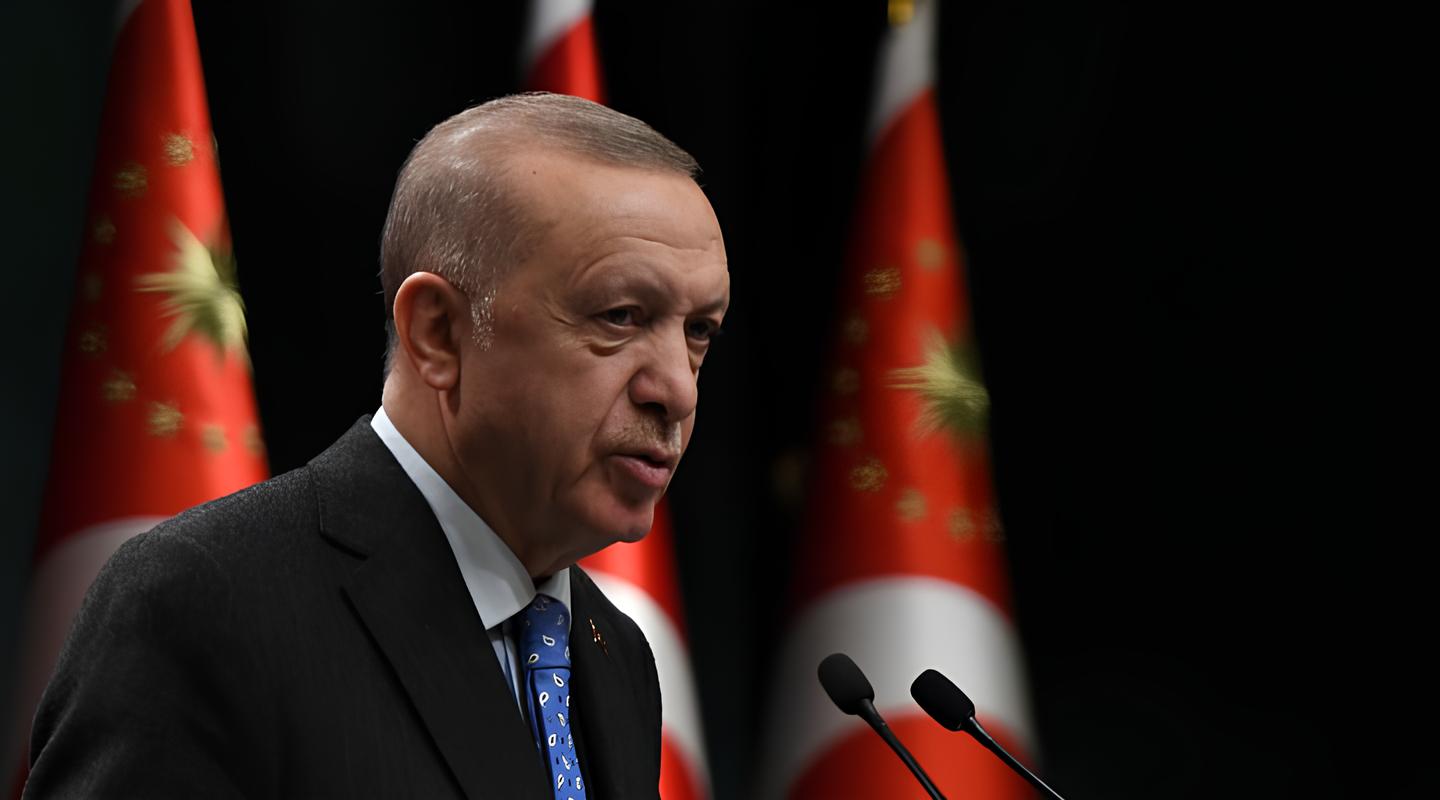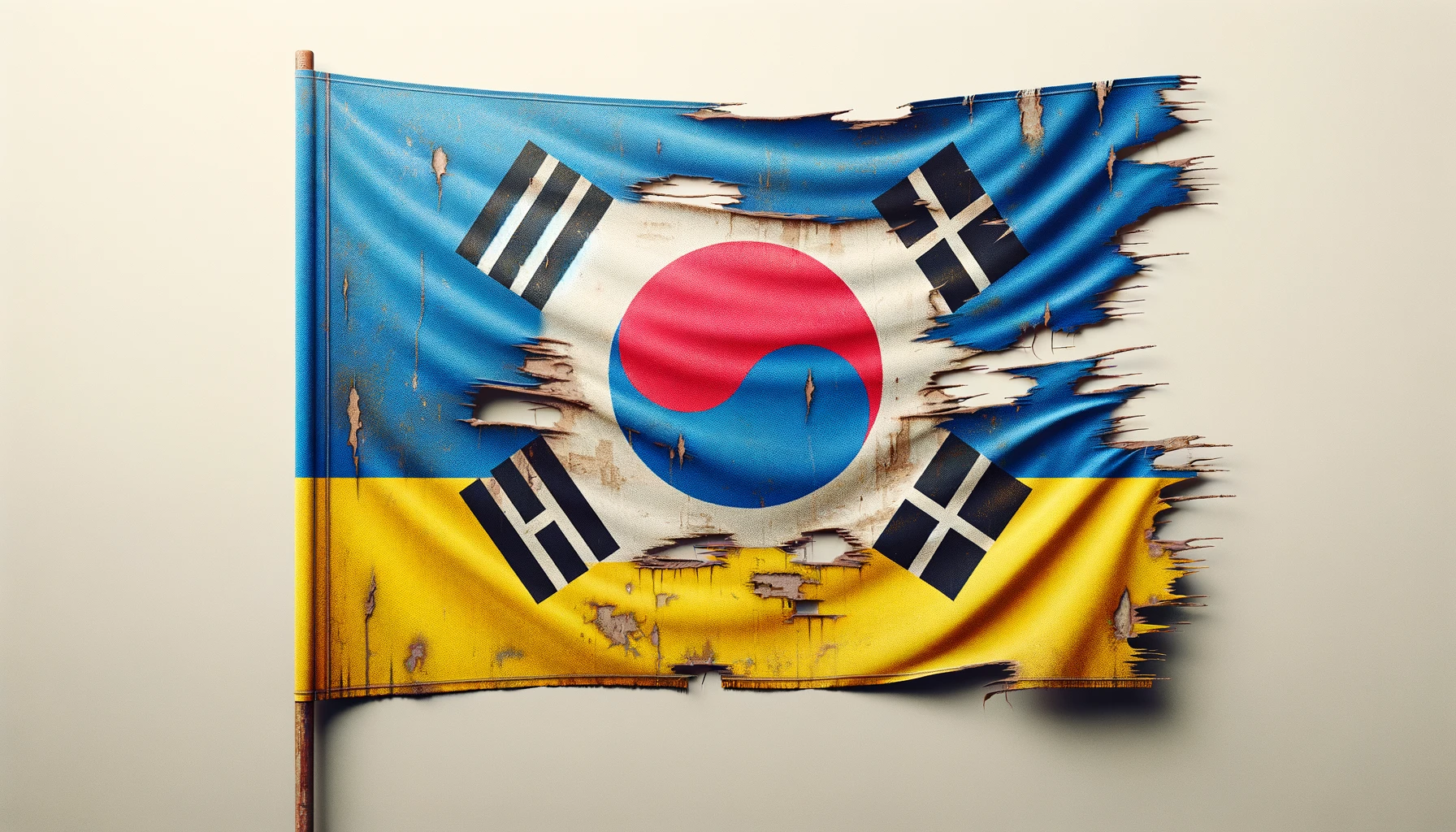
The strategic missteps, the power of global alliances, and the search for peace between the Korean War and the conflict in Ukraine offer crucial insights into today’s international order.


Though separated by decades and distinct geopolitical landscapes, the Korean and Ukrainian Wars exhibit striking historical and strategic parallels. This year marks the 74th anniversary of the Korean War, making it a poignant moment to reflect on these similarities. Due to the similarities between the two wars, many experts recommended that the Korean armistice model be implemented in the Ukraine War to stop the expansion of the war. By examining the historical, geopolitical, and strategic similarities in these two wars, it is essential to determine what lessons can be drawn for Russia, the United States, and the international community and find any alternatives for reducing this conflict.
The Korean War began on June 25, 1950, when North Korean forces, backed by the Soviet Union and China, crossed the 38th parallel and tried to invade South Korea. Historically, this invasion was predicated on the belief that the United States would be unwilling or unable to mount a substantial military response. Several factors contributed to this miscalculation.
The United States had significantly demobilized its military forces after World War II, reducing the number of soldiers from eight million in 1945 to 684,000 by 1947. This drastic reduction led to a perception that the US was unprepared for another large-scale conflict so soon after the war. It was part of a broader trend of reducing military expenditures and shifting focus to economic recovery and domestic issues. This was the reason that led to another fundamental underestimation of the US commitment to containing communism globally. The North Korean leadership, supported by Soviet and Chinese assurances, misjudged the Truman administration’s readiness to respond militarily to aggression in Korea as part of its broader strategy of containment, articulated in the Truman Doctrine. They underestimated the Western partners, including the United States’ ability to galvanize the allies into action and respond swiftly.
Furthermore, North Korean leader Kim Il-sung and his Soviet and Chinese backers believed the United States was more focused on Europe, particularly the emerging Cold War tensions with the Soviet Union. The belief was that Asia was of secondary importance to US strategic interests, and thus, the US might not intervene decisively in the Korean Peninsula. This belief was reinforced by US Secretary of State Dean Acheson’s speech in January 1950, which outlined America’s defense perimeter in the Pacific and notably excluded Korea. North Korea and its allies interpreted this speech as an indication that the US would not defend South Korea, thereby encouraging the invasion.
Similarly, the Ukraine War, which can be traced back to Russia’s annexation of Crimea in 2014, illustrates a comparable underestimation of Western resolve. Under President Vladimir Putin, Russia believed its actions in Ukraine would meet minimal resistance from the West. This belief was rooted in historical precedents, where previous aggressive moves by Russia, such as in Georgia (2008) and earlier in Ukraine, met with limited and short-lived Western responses due to a lack of consensus among NATO member states. The Kremlin’s strategy seemed to rely on the assumption that the West would eventually acquiesce. This was articulated by Dmitry Medvedev in 2022 at Russia’s National Security Council. According to the Wilson Center’s Kennan Institute, he recalled the 2008 Georgia conflict, suggesting that the West would tire of confrontation and seek negotiations, viewing Russia as too significant to ostracize completely.
The Korean War, which erupted in 1950, took place in a bipolar world dominated by the United States and the Soviet Union. After World War II, these two superpowers emerged, each championing opposing ideologies: capitalism and democracy led by the US and communism led by the Soviet Union. The division of Korea at the 38th parallel into Soviet-backed North Korea and American-backed South Korea epitomized this global ideological confrontation.
The conflict in Korea quickly escalated into a proxy war, with the North receiving substantial military and logistical support from the Soviet Union and China, while South Korea was bolstered by a coalition of United Nations forces, predominantly composed of US troops. This war became a battleground for the larger Cold War struggle, with each side aiming to prove the superiority and resilience of its political and economic system.
The Ukraine conflict exhibits characteristics of a proxy war between the Western powers, led by the US and NATO allies, and an authoritarian or revisionist bloc that includes Russia and, indirectly, China. Through economic ties and diplomatic backing, China’s tacit support for Russia underscores its strategic alignment against Western influence. The Western response, characterized by extensive military aid to Ukraine, economic sanctions against Russia, and diplomatic efforts to isolate Moscow, mirrors the strategic dynamics of Cold War proxy conflicts. The war in Ukraine, much like the Korean War, is a microcosm of a larger struggle, this time between liberal democracies and authoritarian regimes. Concurrently, this war occurred during a global reorganization towards multipolarity, alongside a stronger US-Sino rivalry. It highlights the geopolitical fault lines and shifting alliances that define the contemporary international order.
Both the Korean War and the Ukrainian War have been characterized by strategic decisions to limit the scope of the conflict, even though the situation in Ukraine has recently evolved after the United States allowed Ukraine to use its weapons to strike inside Russian territory.
During the Korean War, the United States intervened strategically to prevent an escalation into a direct military confrontation between the major powers, especially China. President Truman’s “limited war” policy restricted the use of nuclear weapons and prohibited bombing military infrastructure outside of the Korean peninsula, such as in Manchuria. This was because the United States wanted to avoid massive military retaliations from China and the Soviet Union, which could potentially lead to another World War. The United States was not ready to prepare for another major world war, leading the Truman administration to prioritize containing the communists behind the 38th parallel.
In the Ukrainian conflict, the West initially adopted a similar strategy of restraint, providing military aid to Ukraine while restricting the use of these weapons beyond Russian borders. Similarly, Vladimir Putin emphasized that Russia had no plans to attack outside of Ukraine, indicating a strategy of restraint on Russia’s part as well. However, as Russia intensified its military actions in Ukraine under the pretext of creating a “buffer zone,” the situation shifted. Ukraine is now permitted to use Western-supplied weapons to target sites within Russia, indicating a significant change in the West’s approach to the conflict.
One of the key lessons from the Korean War that can be applied, especially to Russia, is the critical importance of recognizing and rectifying strategic miscalculations. During the Korean War, North Korea, backed by the Soviet Union and China, underestimated the resolve of the United States and its Western allies. This miscalculation ultimately led to a significant consolidation of Western efforts, resulting in a robust military and political response from the United States and UN member states. Similarly, Russia must realize that its initial miscalculations regarding Western reactions have led to an unprecedented consolidation of the Western front. NATO and even IP4 nations (South Korea, Japan, Australia, and New Zealand) have come together more decisively than anticipated at the Washington NATO summit, providing substantial military aid and imposing severe economic sanctions. Thus, Russia should abandon any notion of achieving total victory, understanding that continued aggression will only strengthen the Western alliance against it.
The Korean War underscores the importance of an alliance-based approach to international conflicts for the United States. The success of the US-led coalition during the Korean War demonstrated the power of collective security and international solidarity. In the context of the Ukraine War, the US must ensure it continues to leverage its alliances effectively. One of the critical lessons of this alliance-based diplomacy is to avoid sending mixed or ambiguous signals, as occurred with the annexation of Crimea and earlier events in Ukraine. Such ambiguity can embolden aggressors and risk leading to a permanently divided Ukraine. Clear, consistent support for Ukraine and a unified stance among Western allies are essential to counter Russian aggression and support Ukraine’s sovereignty. Although the US’s foreign policy might differ depending on the result of the November US presidential election, this should remain a foundational aspect of US foreign policy.
Additionally, the Korean War provides a historical precedent for the importance of seeking peace and consensus amidst ongoing conflicts and global reorganization. Despite the intense hostilities during the Korean War, significant efforts were made by the United Nations Command and numerous affiliated nations to negotiate an armistice, leading to a ceasefire and the establishment of the Demilitarized Zone (DMZ). While not a formal peace treaty, this outcome created a relatively stable situation by stopping the devastating war. Like the international community in the 1950s, the current international community should find a diplomatic resolution that brings lasting peace to the region and should not halt top-level and grassroots dialogues. The numerous wars like the Ukraine War, including the Israel-Hamas war, and disputes occurring amid this global reorganization highlight the necessity of concerted efforts toward conflict resolution. The Ukraine War should catalyze renewed diplomatic initiatives to establish a stable and peaceful regional order.
Despite possible lessons learned from these two wars, challenges are still ahead. The United States has its presidential election in November, a critical event that could influence US foreign policy. The outcome of this election will determine the legislative agenda and could have significant implications for international relations, particularly regarding the Ukrainian conflict. Depending on which party and which candidate gains control, there could be shifts in the US approach to supporting Ukraine and the alliance-based approach. A change in leadership to Donald Trump might lead to a reassessment of military aid, economic sanctions against Russia, and diplomatic strategies. Any signs of reduced support or a pivot in policy could embolden Russia and impact the conflict dynamics. Additionally, the elections could lead to a greater focus on domestic issues, as seen in recent Pew Research Center polls showing that only 23% of Americans prioritized supporting Ukraine. This shift could potentially divert attention and resources from international engagements and influence the US’s ability to lead international coalitions effectively.
Another significant development is the increasing cooperation between North Korea and Russia. This growing partnership presents several strategic challenges and has the potential to destabilize regional and global security. North Korea and Russia have been exploring ways to enhance their military and technological cooperation. Such collaboration could lead to the exchange of advanced weapons systems and technologies, bolstering North Korea’s military capabilities and complicating security dynamics in East Asia. Moreover, Russia, facing international sanctions and economic isolation due to its actions in Ukraine, may seek closer economic ties with North Korea, which has already been shown to receive millions of ammunition from North Korea. This increased cooperation between North Korea and Russia could also complicate diplomatic efforts to address security concerns in the Korean Peninsula and Eastern Europe. It could encourage North Korea to pursue more aggressive policies, knowing it has the backing of a major power like Russia.
Ultimately, the echoes of the two wars share commonalities in various factors and lessons drawn from the Korean War: the need for strategic clarity, strong international alliances, and a persistent pursuit of peace. By learning from historical precedents, Russia, the United States, and their respective allies should better navigate the complexities of the Ukrainian conflict. This approach will not only help mitigate the immediate impacts of the war but also contribute to a more stable and peaceful international order in the long term. However, the upcoming US elections and the increased cooperation between North Korea and Russia present significant hurdles in achieving these lessons, making geopolitics in Europe and Asia more complicated.
The strategic missteps, the power of global alliances, and the search for peace between the Korean War and the conflict in Ukraine offer crucial insights into today’s international order.

Though separated by decades and distinct geopolitical landscapes, the Korean and Ukrainian Wars exhibit striking historical and strategic parallels. This year marks the 74th anniversary of the Korean War, making it a poignant moment to reflect on these similarities. Due to the similarities between the two wars, many experts recommended that the Korean armistice model be implemented in the Ukraine War to stop the expansion of the war. By examining the historical, geopolitical, and strategic similarities in these two wars, it is essential to determine what lessons can be drawn for Russia, the United States, and the international community and find any alternatives for reducing this conflict.
The Korean War began on June 25, 1950, when North Korean forces, backed by the Soviet Union and China, crossed the 38th parallel and tried to invade South Korea. Historically, this invasion was predicated on the belief that the United States would be unwilling or unable to mount a substantial military response. Several factors contributed to this miscalculation.
The United States had significantly demobilized its military forces after World War II, reducing the number of soldiers from eight million in 1945 to 684,000 by 1947. This drastic reduction led to a perception that the US was unprepared for another large-scale conflict so soon after the war. It was part of a broader trend of reducing military expenditures and shifting focus to economic recovery and domestic issues. This was the reason that led to another fundamental underestimation of the US commitment to containing communism globally. The North Korean leadership, supported by Soviet and Chinese assurances, misjudged the Truman administration’s readiness to respond militarily to aggression in Korea as part of its broader strategy of containment, articulated in the Truman Doctrine. They underestimated the Western partners, including the United States’ ability to galvanize the allies into action and respond swiftly.
Furthermore, North Korean leader Kim Il-sung and his Soviet and Chinese backers believed the United States was more focused on Europe, particularly the emerging Cold War tensions with the Soviet Union. The belief was that Asia was of secondary importance to US strategic interests, and thus, the US might not intervene decisively in the Korean Peninsula. This belief was reinforced by US Secretary of State Dean Acheson’s speech in January 1950, which outlined America’s defense perimeter in the Pacific and notably excluded Korea. North Korea and its allies interpreted this speech as an indication that the US would not defend South Korea, thereby encouraging the invasion.
Similarly, the Ukraine War, which can be traced back to Russia’s annexation of Crimea in 2014, illustrates a comparable underestimation of Western resolve. Under President Vladimir Putin, Russia believed its actions in Ukraine would meet minimal resistance from the West. This belief was rooted in historical precedents, where previous aggressive moves by Russia, such as in Georgia (2008) and earlier in Ukraine, met with limited and short-lived Western responses due to a lack of consensus among NATO member states. The Kremlin’s strategy seemed to rely on the assumption that the West would eventually acquiesce. This was articulated by Dmitry Medvedev in 2022 at Russia’s National Security Council. According to the Wilson Center’s Kennan Institute, he recalled the 2008 Georgia conflict, suggesting that the West would tire of confrontation and seek negotiations, viewing Russia as too significant to ostracize completely.
The Korean War, which erupted in 1950, took place in a bipolar world dominated by the United States and the Soviet Union. After World War II, these two superpowers emerged, each championing opposing ideologies: capitalism and democracy led by the US and communism led by the Soviet Union. The division of Korea at the 38th parallel into Soviet-backed North Korea and American-backed South Korea epitomized this global ideological confrontation.
The conflict in Korea quickly escalated into a proxy war, with the North receiving substantial military and logistical support from the Soviet Union and China, while South Korea was bolstered by a coalition of United Nations forces, predominantly composed of US troops. This war became a battleground for the larger Cold War struggle, with each side aiming to prove the superiority and resilience of its political and economic system.
The Ukraine conflict exhibits characteristics of a proxy war between the Western powers, led by the US and NATO allies, and an authoritarian or revisionist bloc that includes Russia and, indirectly, China. Through economic ties and diplomatic backing, China’s tacit support for Russia underscores its strategic alignment against Western influence. The Western response, characterized by extensive military aid to Ukraine, economic sanctions against Russia, and diplomatic efforts to isolate Moscow, mirrors the strategic dynamics of Cold War proxy conflicts. The war in Ukraine, much like the Korean War, is a microcosm of a larger struggle, this time between liberal democracies and authoritarian regimes. Concurrently, this war occurred during a global reorganization towards multipolarity, alongside a stronger US-Sino rivalry. It highlights the geopolitical fault lines and shifting alliances that define the contemporary international order.
Both the Korean War and the Ukrainian War have been characterized by strategic decisions to limit the scope of the conflict, even though the situation in Ukraine has recently evolved after the United States allowed Ukraine to use its weapons to strike inside Russian territory.
During the Korean War, the United States intervened strategically to prevent an escalation into a direct military confrontation between the major powers, especially China. President Truman’s “limited war” policy restricted the use of nuclear weapons and prohibited bombing military infrastructure outside of the Korean peninsula, such as in Manchuria. This was because the United States wanted to avoid massive military retaliations from China and the Soviet Union, which could potentially lead to another World War. The United States was not ready to prepare for another major world war, leading the Truman administration to prioritize containing the communists behind the 38th parallel.
In the Ukrainian conflict, the West initially adopted a similar strategy of restraint, providing military aid to Ukraine while restricting the use of these weapons beyond Russian borders. Similarly, Vladimir Putin emphasized that Russia had no plans to attack outside of Ukraine, indicating a strategy of restraint on Russia’s part as well. However, as Russia intensified its military actions in Ukraine under the pretext of creating a “buffer zone,” the situation shifted. Ukraine is now permitted to use Western-supplied weapons to target sites within Russia, indicating a significant change in the West’s approach to the conflict.
One of the key lessons from the Korean War that can be applied, especially to Russia, is the critical importance of recognizing and rectifying strategic miscalculations. During the Korean War, North Korea, backed by the Soviet Union and China, underestimated the resolve of the United States and its Western allies. This miscalculation ultimately led to a significant consolidation of Western efforts, resulting in a robust military and political response from the United States and UN member states. Similarly, Russia must realize that its initial miscalculations regarding Western reactions have led to an unprecedented consolidation of the Western front. NATO and even IP4 nations (South Korea, Japan, Australia, and New Zealand) have come together more decisively than anticipated at the Washington NATO summit, providing substantial military aid and imposing severe economic sanctions. Thus, Russia should abandon any notion of achieving total victory, understanding that continued aggression will only strengthen the Western alliance against it.
The Korean War underscores the importance of an alliance-based approach to international conflicts for the United States. The success of the US-led coalition during the Korean War demonstrated the power of collective security and international solidarity. In the context of the Ukraine War, the US must ensure it continues to leverage its alliances effectively. One of the critical lessons of this alliance-based diplomacy is to avoid sending mixed or ambiguous signals, as occurred with the annexation of Crimea and earlier events in Ukraine. Such ambiguity can embolden aggressors and risk leading to a permanently divided Ukraine. Clear, consistent support for Ukraine and a unified stance among Western allies are essential to counter Russian aggression and support Ukraine’s sovereignty. Although the US’s foreign policy might differ depending on the result of the November US presidential election, this should remain a foundational aspect of US foreign policy.
Additionally, the Korean War provides a historical precedent for the importance of seeking peace and consensus amidst ongoing conflicts and global reorganization. Despite the intense hostilities during the Korean War, significant efforts were made by the United Nations Command and numerous affiliated nations to negotiate an armistice, leading to a ceasefire and the establishment of the Demilitarized Zone (DMZ). While not a formal peace treaty, this outcome created a relatively stable situation by stopping the devastating war. Like the international community in the 1950s, the current international community should find a diplomatic resolution that brings lasting peace to the region and should not halt top-level and grassroots dialogues. The numerous wars like the Ukraine War, including the Israel-Hamas war, and disputes occurring amid this global reorganization highlight the necessity of concerted efforts toward conflict resolution. The Ukraine War should catalyze renewed diplomatic initiatives to establish a stable and peaceful regional order.
Despite possible lessons learned from these two wars, challenges are still ahead. The United States has its presidential election in November, a critical event that could influence US foreign policy. The outcome of this election will determine the legislative agenda and could have significant implications for international relations, particularly regarding the Ukrainian conflict. Depending on which party and which candidate gains control, there could be shifts in the US approach to supporting Ukraine and the alliance-based approach. A change in leadership to Donald Trump might lead to a reassessment of military aid, economic sanctions against Russia, and diplomatic strategies. Any signs of reduced support or a pivot in policy could embolden Russia and impact the conflict dynamics. Additionally, the elections could lead to a greater focus on domestic issues, as seen in recent Pew Research Center polls showing that only 23% of Americans prioritized supporting Ukraine. This shift could potentially divert attention and resources from international engagements and influence the US’s ability to lead international coalitions effectively.
Another significant development is the increasing cooperation between North Korea and Russia. This growing partnership presents several strategic challenges and has the potential to destabilize regional and global security. North Korea and Russia have been exploring ways to enhance their military and technological cooperation. Such collaboration could lead to the exchange of advanced weapons systems and technologies, bolstering North Korea’s military capabilities and complicating security dynamics in East Asia. Moreover, Russia, facing international sanctions and economic isolation due to its actions in Ukraine, may seek closer economic ties with North Korea, which has already been shown to receive millions of ammunition from North Korea. This increased cooperation between North Korea and Russia could also complicate diplomatic efforts to address security concerns in the Korean Peninsula and Eastern Europe. It could encourage North Korea to pursue more aggressive policies, knowing it has the backing of a major power like Russia.
Ultimately, the echoes of the two wars share commonalities in various factors and lessons drawn from the Korean War: the need for strategic clarity, strong international alliances, and a persistent pursuit of peace. By learning from historical precedents, Russia, the United States, and their respective allies should better navigate the complexities of the Ukrainian conflict. This approach will not only help mitigate the immediate impacts of the war but also contribute to a more stable and peaceful international order in the long term. However, the upcoming US elections and the increased cooperation between North Korea and Russia present significant hurdles in achieving these lessons, making geopolitics in Europe and Asia more complicated.

Seunghwan Shane Kim, recently completed his master’s degree at John Hopkins University. He is a researcher at the Korea Foundation.
